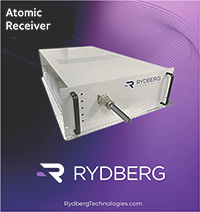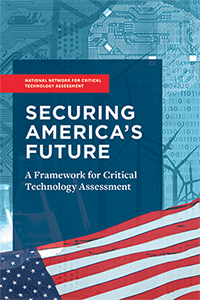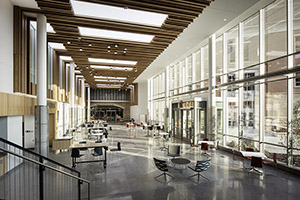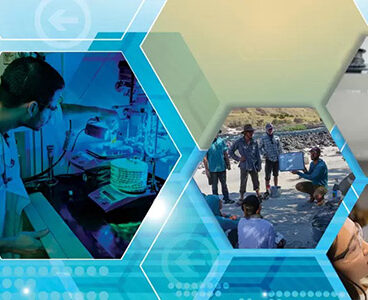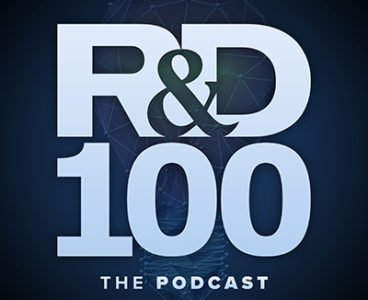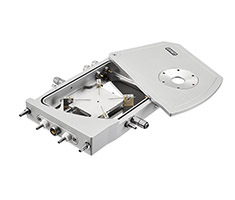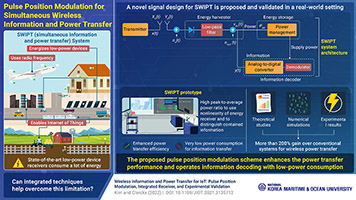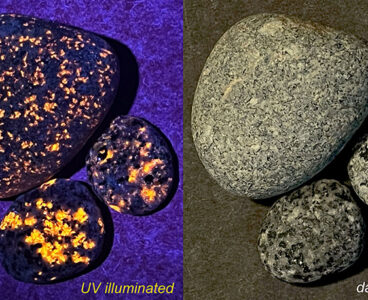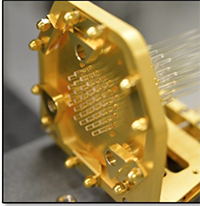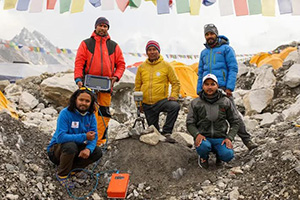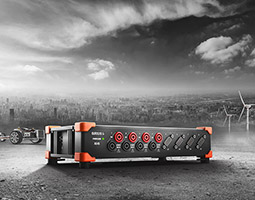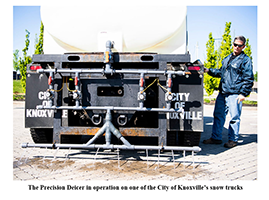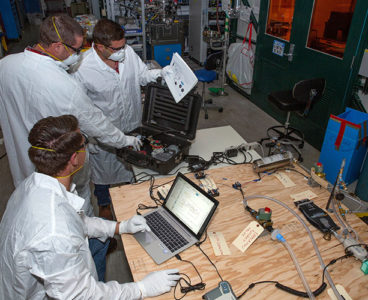Rydberg Technologies Inc., a maker of Rydberg quantum technologies and a pioneer in radio frequency (RF) quantum sensing, has announced its low-size weight and power (SWaP) atomic receiver and the successful demonstration of the world’s first long-range radio communications with an atomic quantum sensor at the recent U.S. Army Combat Capabilities Development Command (DEVCOM) C5ISR…
Nokia unveils plans for new state-of-the-art R&D facility in New Jersey tech hub
Nokia has announced plans to relocate its campus in Murray Hill, New Jersey, by 2028 to a new state-of-the-art R&D facility in the burgeoning innovation and technology hub in New Brunswick, New Jersey. The new leading-edge R&D facility will propel Nokia Bell Labs to adapt and evolve to remain at the forefront of cutting-edge technology…
New report identifies pathways to strengthen U.S. competitiveness in key technology areas
A network of universities funded by the U.S. National Science Foundation completed a yearlong, nearly $4 million pilot effort with the release of a report – Securing America’s Future: A Framework for Critical Technology Assessment – on how to enable timely situational awareness of global technology and production capabilities, rigorous methods to quantify the potential value…
DoD awards $9M to create research institute at the VCU College of Engineering
The Department of Defense awarded a $9 million grant to the Virginia Commonwealth University College of Engineering for research and development of electro-optics, infrared, radio frequency, and edge security technologies. These areas are pivotal in managing the electromagnetic spectrum and ensuring network security. Electrical and computer engineering professors Nibir K. Dhar, Ph.D.; Erdem Topsakal, Ph.D.;…
Northern Germany’s expanding R&D ecosystem focuses on space
Flight history in Bremen, Germany, began more than a hundred years ago. Since then, this important northern German city has become well known as the second-largest aerospace hub in the country. Over the past several years, Bremen has established itself as a standard-bearer in aerospace R&D. A growing network of Bremen-based organizations now play leading…
UArizona scientists investigate new frontiers of sound with $30M center
The National Science Foundation has granted the University of Arizona $30 million over five years to establish a new NSF Science and Technology Center. The New Frontiers of Sound Science and Technology Center, which comes with an additional $30 million funding option over the following five years, will bring together researchers working in topological acoustics.…
A 32 Tesla superconducting magnet is focus of Episode 10 of R&D 100 – The Podcast
In this, the tenth episode of the R&D 100 Podcast, we examine the latest technology in superconducting magnets. These magnets have existed since the 1960s, but the field available has been limited by the properties of superconducting materials. So, VP, Editorial Director Paul J. Heney and Senior Editor Aimee Kalnoskas of R&D World spoke with…
California aims to grab CHIPS Act funds
By Gordon Feller The bipartisan “2022 Creating Helpful Incentives to Produce Semiconductors and Science Act of 2022” (CHIPS and Science Act) aims to increase semiconductor manufacturing in the U.S. through a five-year federal investment of $52 billion. With U.S.-China tensions and the potential vulnerability of production in Taiwan, and broader issues of supply chain reliability,…
Improving measurement of electronic materials to boost device performance
By Clara Ko, Sales and Marketing Manager, Linkam Scientific Instruments Photovoltaics, ferroelectrics, and piezoelectrics have a suite of remarkable properties, with a long history of electrical applications in everything from ultrasound transducers to solar cells. But there is constant pressure to improve performance, and in this article, we look at how precisely controlling the temperature…
Scientists develop promising technology to connect low-power devices over a long distance
Korea Maritime and Ocean University scientists have recently developed an innovative signal design for simultaneous wireless information and power transfer system. The proposed pulse position modulation scheme enhances power transfer efficiency and reduces information decoding energy consumption — a double advantage — besides performing better than conventional systems. The technique may bolster Internet-of-Things (IoT) technology.…
Baker-Polito announces grant to boost BlueTech innovation at UMass-Boston
The Baker-Polito Administration has announced a new $820,000 innovation grant to UMass Boston from the Seaport Economic Council (SEC), which will invest in new research and development tools on the waterfront campus and spur engagement with innovative BlueTech startups. The SEC’s Innovation Grant program, managed by the Innovation Institute at the Massachusetts Technology Collaborative (MassTech),…
Ohio grows into a globally recognized R&D hub
By Gordon Feller With top-notch universities, federal research institutes, leading companies from nine major industry sectors, and 14 top-ranked hospital systems, Ohio is a “quiet giant” of innovation in industrial sectors and life science. Ohio has the fifth-highest number of Fortune 500 and Fortune 1000 companies — and is home to more than 120 NYSE/Nasdaq…
Glowing rocks, a new sport, and what we can learn about different approaches
By Mark Jones I’ve discovered a new sport, one made possible by Erik Rintamaki. No, he’s not the inventor of pickleball — and the sport I found is not the fastest growing in the U.S. My new sport is a bit more scientific and, for R&Ders, it comes with a useful allegory. The sport I…
R&D winner of the day: Monolithic Fiber Array Launcher
Fiber arrays are used for constructing optical phased-array lasers, which are used in high-power industrial applications and beam steering for lidar. MIT has developed and built an all-glass, monolithic fiber array that is smaller and more robust than standard arrays. Fiber arrays are used for constructing optical phased-array lasers that can enable power scaling and…
R&D collaborations looking to build expertise, in this week’s R&D power index
The R&D World Index (RDWI) for the week ending February 18, 2022, closed at 5,075.11 for the 25 companies in the RDWI. The Index was down -2.18% (or 113.00 basis points) from the week ending February 11, 2022. The stock of nine RDWI members gained value from 0.96% (Novartis) to 6.14% (Cisco). The stock of…
Invention addresses the problems of running a red light at traffic intersections
By Steve Martin, Purdue Research Foundation An invention from Purdue University and the Indiana Department of Transportation that uses wireless communication devices could save lives at high-speed traffic signals. Principal research analyst Howell Li and transportation research engineer Jijo Mathew of the Joint Transportation Research Program in Purdue University’s Lyles School of Civil Engineering have…
Liberty Defense airport shoe screening technology earns prestigious national award
Liberty Defense Holdings, a technology provider of concealed weapons and threat detection solutions, announces that its millimeter-wave shoe screening technology, initially developed at Pacific Northwest National Laboratory (PNNL), and a 2020 R&D 100 award winner, was awarded the 2022 Interagency Partnership Award from the Federal Laboratory Consortium for Technology Transfer (FLC). The annual FLC awards…
R&D 100 winner of the day: Spectrally Efficient Digital Logic
Spectrally Efficient Digital Logic (SEDL), designed by MIT Lincoln Laboratory, is a set of digital logic building block families that can reduce overall product development costs by operating with intrinsically low EMI emissions. Lower EMI emissions can simplify PCB design and increase the likelihood of passing an EMI test on the first attempt. Low EMI…
GSSI ground penetrating radar equipment used in Mount Everest expedition
Ground penetrating radar (GPR) equipment manufacturer GSSI’s SIR 4000 high-performance GPR system was used by Nepali surveyors and mountaineers who climbed to the top of Mount Everest as part of an expedition to establish the true height of Mount Everest, the world’s tallest mountain. Nepali surveyors and Sherpa guides set up a GPS antenna to…
R&D 100 winner of the day: ELCRES HTV150 Dielectric Film
ELCRES HTV150 film, from SABIC and Shin-Etsu Polymer Co., is the first engineering thermoplastic high-voltage, high-temperature film for DC link power capacitors capable of high energy densities over long periods of time without significant current leakage or charge loss. The film exhibits stable performance and offers excellent handling through metallization and capacitor building processes. ELCRES…
R&D 100 winner of the day: SIRIUS XHS
SIRIUS XHS, developed by Dewesoft d.o.o., is a high-speed data acquisition system with the new Hybrid ADC technology capable of high-bandwidth transient recording and very high-dynamic, alias-free data acquisition. Sirius XHS is the first device with Hybrid ADC technology capable of doing both high bandwidth transient recording and very high dynamic alias-free acquisition, and this…
R&D 100 winner of the day: Precision Deicer
The Precision Deicer, developed by Clinch River Computing and Oak Ridge National Laboratory, uses light-detection and ranging data to gauge the amount of salt or brine needed per section of road, judged against a vulnerability index that accounts for such variables as slope and solar radiation. This technology conserves public resources, ensures driver safety and…
Silicon Valley’s R&D triple play
By Gordon Feller, Contributing Writer Increasingly, trilateral R&D partnerships — linking government with academia and industry — are considered critical to the success of Silicon Valley. Such mixed partnerships succeed when they link industrial firms with governments with universities, especially as real-world variations of the “triple helix” model of innovation, which is a more common…
Physicists find a novel way to switch antiferromagnetism on and off
By Jennifer Chu | MIT News Office When you save an image to your smartphone, those data are written onto tiny transistors that are electrically switched on or off in a pattern of “bits” to represent and encode that image. Most transistors today are made from silicon, an element that scientists have managed to switch…
Dean Kamen speaks out on U.S. and global innovation
Recently, I interviewed master inventor Dean Kamen, well known as the inventor of the stair climbing wheelchair and the Segway, as well as the creator of the FIRST Robotics competitions for school children. I explained to Dean how R&D World’s Global Funding Forecast was reporting that China will outspend the U.S. for the very first…

